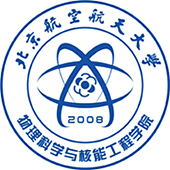| School of Physics and Nuclear Energy Engineering Location Beihang University No. 37, Xueyuan Road, Haidian District Beijing 100191, China Further Information: http://physics.buaa.edu.cn |
 |
|---|
OverviewThe School of Physics and Nuclear Energy Engineering (SPNEE) was started in 1952 as a part of the general physics teaching program at Bei?hang University. In 1997, it became the Department of Physics in the School of Science and finally, and due to its rapid growth, became an independent school in the form of SPNEE in 2009. The first Master’s students were enrolled in 1981 (in optics) and the first doctoral students in 1999 (mate?rials physics and chemistry/condensed matter physics). Faculty and StaffCurrently, there are over 90 faculty and staff in the school, including 27 professors, 25 associate professors, and one member of the Chinese Academy of Engineering Sciences, Professor Jun’en Yao. Departments and CentersThe school consists of three departments and one educational center — the Department of Physics, Department of Applied Physics, Department of Nuclear Science and Technology, and the Education Center for Gen?eral Physics — covering diverse fields including condensed matter phys?ics, theoretical physics, optics, radio physics, and nuclear science and technology. In addition, the school has one Key Laboratory of the Min?istry of Education — the Key Laboratory of Micro-Nano Measurement-Manipulation and Physics established in 2009 — and one international research center — the Research Center for Nuclear Science and Technol?ogy established in 2011. EducationTwo undergraduate programs (applied physics and nuclear physics) and five graduate programs (condensed matter physics, theoretical physics, particle and nuclear physics, optics, and radio physics) currently support 299 undergraduate students, 111 Master’s students, 78 doctoral students, and four international students studying in the school. Scientific ResearchThe school maintains a high standard of work and a dynamic research team encompassing both applied and basic research activities to keep up with the rapid advancements being made in scientific knowledge and technologies. A number of faculty members participate in international |
collaborations across the globe. The school is responsible for a number of national research projects including the National Science and Tech?nology Support Program, the National Magnetic Confinement Fusion Program, the National High-Tech Projects, and the Nation?al Natural Science Foundation Projects. The school publishes over 100 scientific papers each year in international, peer-re?viewed journals and files over 20 patents in the following re?search areas: AwardsSeveral outstanding research awards and recognitions have been granted to our faculty, such as the Achievement in Asia Award (Rob?ert T. Poe Prize) from the Overseas Chinese Physics Association (2009, Jie Meng), the GSI Exotic Nuclei Community (GENCO) membership award (2010, Jie Meng and Bao-Hua Sun), the 1st Prize Natural Science Award from the Ministry of Education (2010, Rong-Ming Wang), and the Humboldt Research Award (2011, Isao Tanihata) |